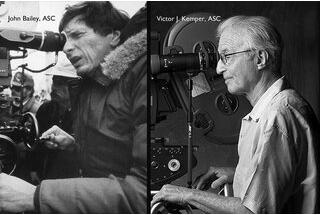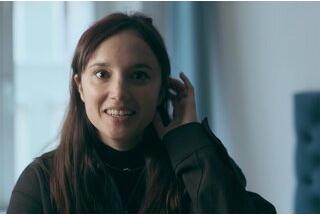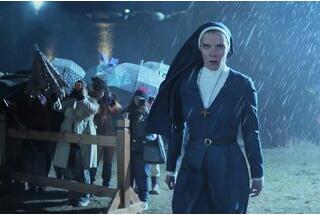Nicolas Loir, AFC, discusses the filming of "Novembre", by Cédric Jimenez
Fear Stalks the CityFor five days, anti-terrorism teams track down the terrorist cell that committed the attacks of November 13, 2015.
When he mentions his first encounter with the project, Nicolas Loir immediately puts the feeling of urgency at the top of the list. “I remember receiving the script quite late one evening, around 11 p.m., and literally devouring it... It was a bit like being caught in a whirlwind, diving into the heart of the action and coming out an hour and forty-five minutes later. It was such a very special experience to return to that evening. To relive certain moments that we all inevitably remember. And which touched us all, but especially Parisians like me.”
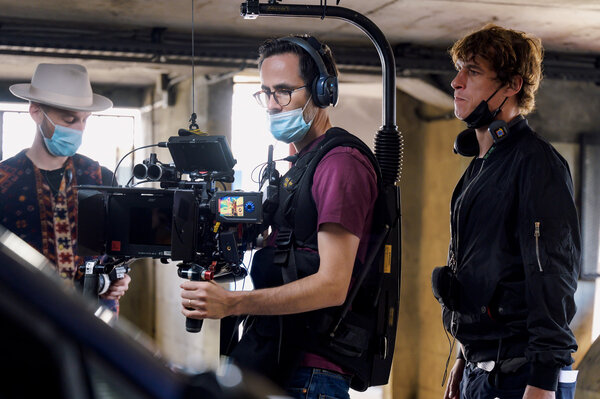
“As Cédric and I began discussions following my initial read-through, we logically agreed that this feeling of urgency had to be present throughout the film, and must plunge the viewer into the heart of the story, by very deliberately limiting any explanatory moments. For example, by not formally introducing any of the many characters, or by foregoing an explanation of the avalanche of acronyms used in the industry (SDAT, BSPP, PR, C1, etc.). These decisions help create the great whirlwind the film catches its viewers in.”
Director Cédric Jimenez is very influenced by the work of Kathryn Bigelow, and he used the film Zero Dark Thirty (2012) as one of his influences. This film retraces the hunt and killing of Osama bin Laden by American special forces. Nicolas Loir further adds: "This is a film where the characters and the investigation remain at the center of the plot. In other words, it’s an ultra-realistic detective film more than an action film. The desire to stick to the investigation is at the center of Olivier Demangel’s screenwriting, and he combed through the prosecutor’s documents for many long months before writing the film. Many of the locations, such as the Ministry of the Interior’s crisis room (nicknamed “The Smoking Room”) or the SDAT’s offices, were inspired by real places that Cédric had been able to partially visit or see in photos. On set, we were sometimes advised by certain civil servants who came on board to advise on a specific set-up or situation. The surveillance scenes, with their little tricks, are a good example of what reality concretely contributed to fiction.”
Shot between spring and summer of 2021, Novembre is paradoxically a film which nevertheless has to take place… in November. The director of photography explains:
“The night of November 13 was exceptionally mild for the season. I perfectly remember this Indian summer atmosphere, with people in T-shirts filling the café terraces. It’s a bit like what you see on screen when the film opens, such as the scene where Inès is jogging on the banks of the Seine. However, filming between May and August to simulate the month of November is not especially easy to pull off, especially outdoors during the day! On this point, I must admit that I was extremely lucky because the weeks of filming were filled with gloomy weather, so much so that the team teased me every time we filmed a daytime exterior scene by invariably announcing the forecast was overcast! Only one sequence comes to mind, shot in very beautiful sunlight in Montreuil: that of the arrest of a supposed terrorist surveilled at his own initiative by the character of Inès (Anaïs Demoustier). There, I had to significantly reduce the saturation of the sky during color grading and break up the contrast as much as possible during filming which, despite the early hour, really sent us back to an atmosphere that was too summery.”

Regarding Cédric Jimenez’s approach to filming, Nicolas Loir tells us that the acting is at the center of his work. “Cédric wants to leave the actors a lot of freedom. He always starts with a very precise breakdown of each scene, but we really have to be able to adapt in lighting by illuminating the room overall and by always leaving room for two or even three cameras (as in the Smoking Room set) in often opposite directions. This is to be able to capture the right shot in both shot and reverse shot. His method of setting up is also particular, because he always begins to cover his scenes by first shooting the closest shots, such as shot-reverse-shot. It is only once this work is done that we then move on to the wider shots, with a new take, ensuring continuity on set and scenography with the selected takes. All this to capture the acting as best as possible. So, it’s up to me to anticipate the close-ups to manage the photography as well as possible, without being beaten when you move the camera back afterwards. So that forces me to light each setup overall with an atmosphere that can’t change too much in function of the shot. Fortunately, Cédric has a great sense of how to place his actors in the most favorable positions in the set. And he allows me to add only a minimum of things for the close-ups.
Regarding the set of the SDAT offices, for example, after discussion with Jean-Philippe Moreaux, the chief decorator, and my chief electrician, Thomas Garreau, I was able to have the set design department install 200 60cm x 60cm LED ceiling tiles, which were fully controlled in color and intensity by iPad via Luminair. This made it possible to adapt very quickly to almost all camera angles, by adding, when necessary, sheets, pieces of white cardboard or off-screen canvases to densify, soften, reflect and thus better control the contrast. The prop lights on the desks also play a very important role in this setup because they can be adjusted according to the positions of the faces. Computer screens also played an important role as back-up sources. Since each light was identified by a number, this or that area could be immediately switched off or adjusted on the iPad. To summarize, the set itself becomes the light source. Working closely with the set design crew is therefore essential.”
Having chosen to shoot November with an Arri Alexa Mini LF, Nicolas Loir explains his decision: “I didn’t really choose the Mini LF for the full frame, but above all for the advantage in sensitivity and definition that it has compared to the Alexa. Shooting at ISO 2500, as on this film, I find that the sensor holds up really well and that the color rendering is very pleasant. By equipping it with a Tribe 7 Transcient series, we brought more character to the image without going into something too flashy. I really like the rendering of the Tribe 7s; they have a very interesting roundness and fall off, modern lenses whose sharpness isn’t too extreme. There was a lot of work done in preproduction and screen tests shot on location. This allowed us to create two LUTs that we used for the entire shoot. After colorist Mathieu Caplanne and I refined them during the first days of shooting, I was then able to deliver dailies that were very close to the desired final image, which seems to me to have been really fundamental for the editing process and the choice of shots. It also saved us a lot of time during final grading of the film, which took three weeks.”
Although the film asserts itself chiefly as an investigation (with a majority of office scenes or surveillance missions) the dramatic climax is the recreation of the assault of November 18, 2015 led by the special forces of the police in the apartment in Saint-Denis. For the needs of this scene, the film crew first filmed the exteriors in Aubervilliers, then moved to studios in Epinay-sur-Seine.

Nicolas Loir explains: “This scene was obviously very important, and could not be recreated as the way Cédric imagined it on location. So, we started by filming all the exterior shots up to the shot where the SWAT team enters the stairwell of the building. Because of constraints related to the shooting schedule, this session took place during the third week of filming, quite close to the summer solstice. Because the nights were very short at this time, it was necessary to play as much as possible with the end of the afternoon and the dawns to represent the dawn effect of the end of the assault by choosing each time the right angles for continuity’s sake. At night, I had installed, in the chosen streets, about fifteen Skypanels under the heads of the existing streetlights to very quickly be able to switch from one angle to another in the middle of the night and also to choose the precise color we had in mind. The help of the municipality was also invaluable, allowing us to turn off and plug our sources directly into the streetlights to be able to control everything remotely. The electrical and machinery teams did a lot of prelight work and we were able to shoot very quickly during these short nights.”
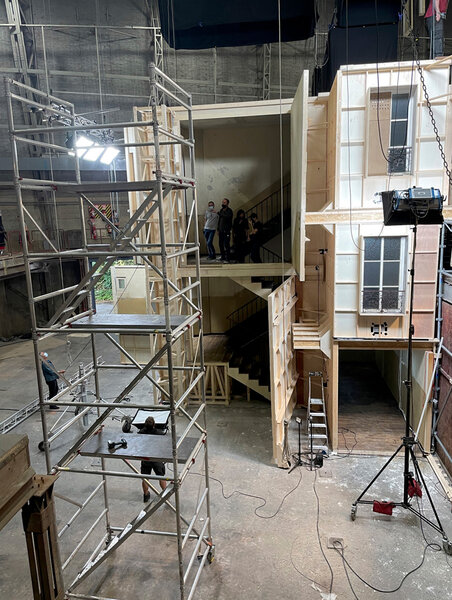
“ The interior shots of the assault itself, on the other hand, had to wait almost two months, for the very end of the shooting schedule. For those shots, Cedric absolutely wanted to shoot with as many on-set effects as possible, without resorting too much to digital. The decoration team therefore rebuilt two and a half stories of the building on Set F at Epinay, with the stairwell taking advantage of the pit on set. Since a majority of the bullet holes were recreated live, the SFX team (led by François Philipi) had prepared several copies of the wall with the entrance door leading to the terrorists’ apartment. Equipped with miscellaneous ammunition to simulate impacts, he would set them off on his control panel at every take, and the prop guns would shoot ¼ load blanks. The rather incredible amount of flying debris, smoke and other dust generated by the device is key to the scene’s credibility. The quick-change set design helped us a lot to manage the increasing deterioration from take to take. In the end, only a few additional impacts were added after editing, the explosion itself was also generated on set. All in all, three days were necessary for us to film the studio part.”
Also questioned about the origin of the police cam images supposed to have been filmed by the cameras attached to the helmets of the members of the SWAT Team, Nicolas Loir explains that he had done some research on the subject: "We had to find cameras that were sensitive enough to be able to film from the helmets of the actors but which could also produce images we could use in the film. Using GoPro was therefore impossible because it was not realistic. By doing research on the Net, I came across a brand used by the special forces of several countries: Mohoc cameras, specially designed to adapt to helmets and withstand tough working conditions. Along with these Mohocs, we also used "pedestrian" cameras, pinned on tactical vests, such as are used by the police in France. By mixing all these sources (some being in thermal vision), the scene in the final cut is shared between images shot by the four Mini LF cameras which covered the action, and these police cameras, the latter of which shot some unique footage.”
(Interview by François Reumont, for the AFC, translated from French by A. Baron-Raiffe)
 En
En
 Fr
Fr
